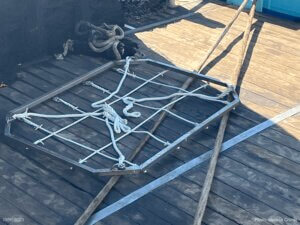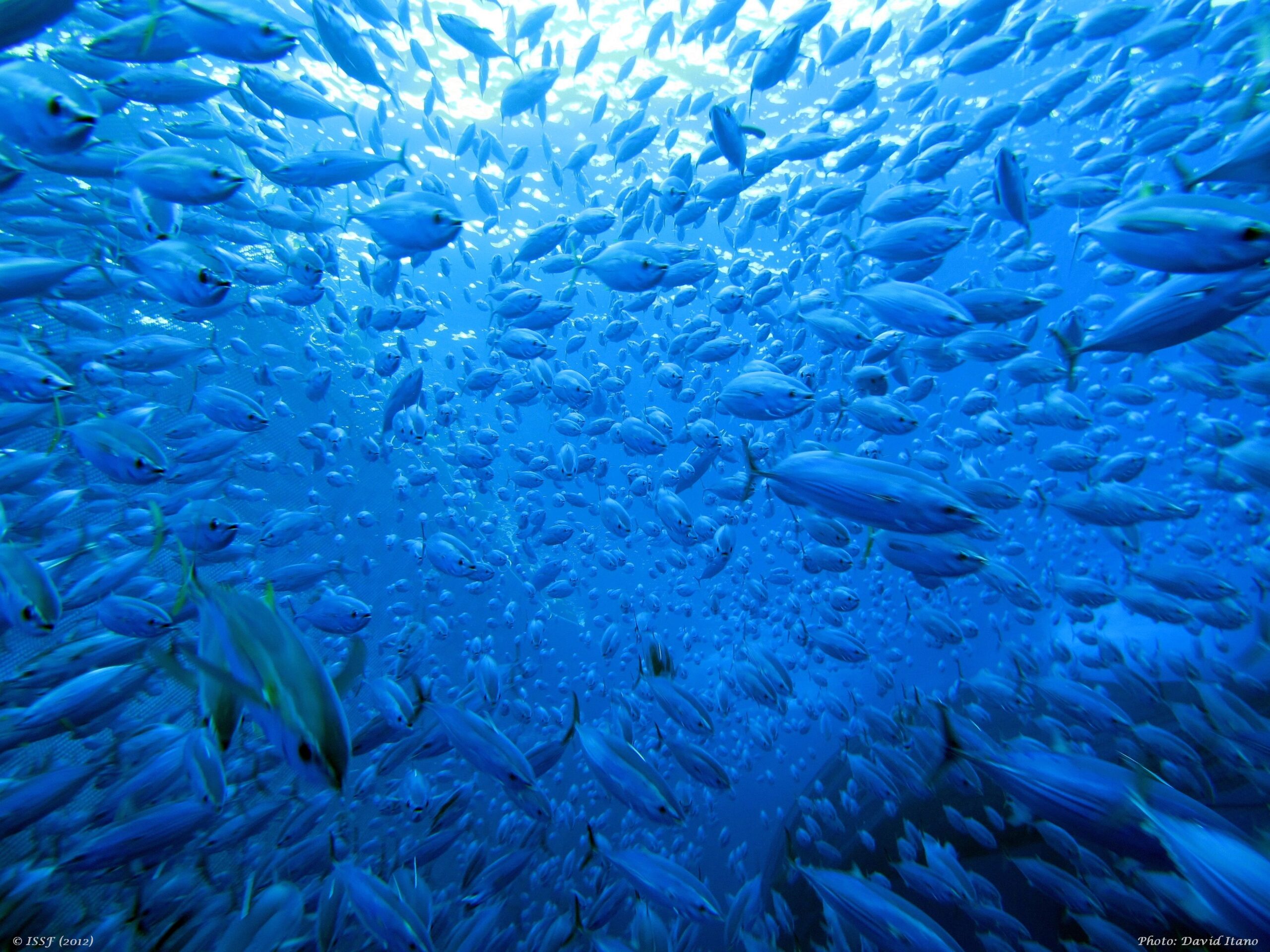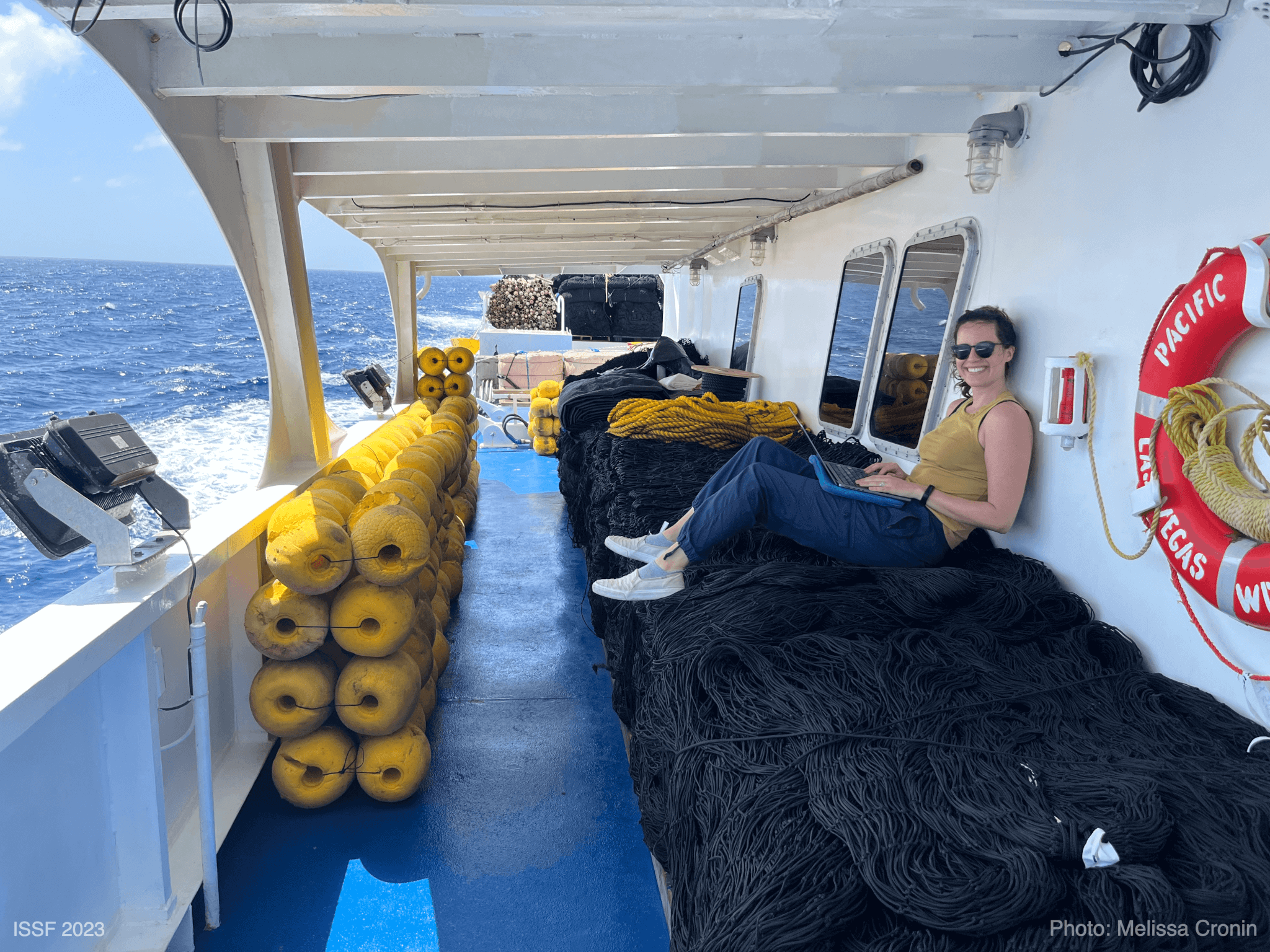
Update from the Field: Fishing for Answers for Endangered Mobulid Rays
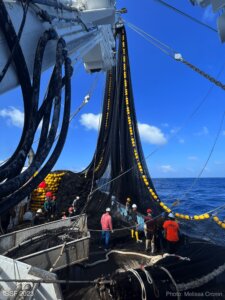 Testing conservation solutions can sometimes require setting sail on the high seas.
Testing conservation solutions can sometimes require setting sail on the high seas.
In December 2022, we began the first of our field expeditions onboard tuna purse seine vessels, in collaboration with the National Oceanic and Atmospheric Administration (NOAA); AZTI; University of California, Santa Cruz; and the American Tunaboat Association.
We’re searching for Mobulids — otherwise known as manta and devil rays — which are sometimes captured accidentally by fishing boats.
Protecting Vulnerable Mobulids
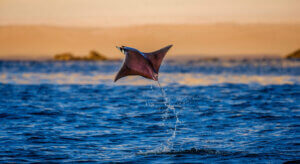
Though these encounters are rare and occur primarily in free-swimming-school sets, it’s important that scientists and fishers work together to avoid these interactions because Mobulids are experiencing population declines globally.
We have two main goals for these trips: first, we want to simply find out more information about these threatened species, using fishing vessels as scientific platforms.
We’re taking tiny samples of Mobulid tails that can be used to unlock huge amounts of genetic and demographic information about these mysterious species.
We’re also swabbing Mobulid mucus that can be used for novel rapid identification technology by the organization iCatch to improve species identification in fisheries across the world.
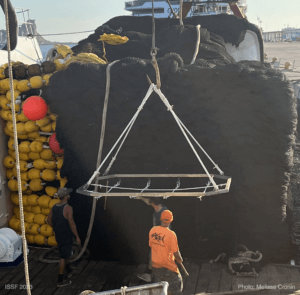 Testing the Manta Grid
Testing the Manta Grid
Second, we are working with fishing crews to test out a novel bycatch mitigation technology — a “manta grid,” designed to facilitate fast release for accidentally captured rays. The grid takes advantage of the powerful hydraulic machines already in place on these vessels — which come in handy when you need to lift a Mobulid that weighs the same as a small car.
Even more important, Mobulids, like many sharks, need to constantly pass water over their gills to stay alive (a process called ram ventilation). So, any technology that brings the animal back into the water faster is likely to increase their chance of survival after release. For Mobulids, who reproduce slowly and have only one offspring every few years, reducing the impact of bycatch could have huge benefits for population status.
But all good technologies need to be tested. To test the manta grid, we are deploying satellite-linked tags on Mobulids captured in the net. These tags not only tell us whether a Mobulid survives the capture.
They also can give us rare and valuable information on the movement of Mobulids. For remote and distant areas of the high seas, this kind of data is virtually impossible to access with conventional scientific methods.
Working with Fishers at Sea
We’ve been at sea onboard the American purse seiner Pacific Princess for three weeks now and are on the lookout for any of the five Mobulid species found in the Pacific Ocean.
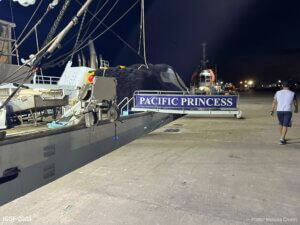
In the meantime, working with tuna fishers at sea presents a unique opportunity to gather information about Mobulid sightings, consult with crew about feasible solutions, and share our Mobulid research and conservation.
Stay tuned for more news from the expedition and results from this project!
Melissa Cronin, Ph.D. of the University of California, Santa Cruz, was the Grand Prize winner in ISSF’s International Seafood Sustainability Foundation (ISSF) Seafood Sustainability Contest.She won for her contest entry, “Incentivizing Collaborative Release to Reduce Elasmobranch Bycatch Mortality,” which proposed handling-and-release methods that purse-seine vessel skippers and crew can use to reduce the mortality of manta rays and devil rays incidentally caught during tuna fishing.
